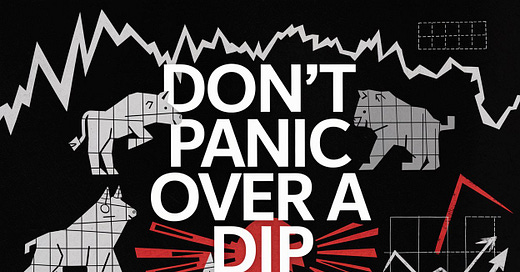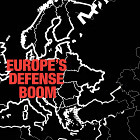Look, if a 4-percent slide makes your palms sweat, let’s be real: you’ve got a problem.
Nobody wants to see their portfolio turn into a rollercoaster.
But a single-digit drop is nothing compared to the market storms we’ve all experienced—and it’s definitely nothing compared to the drawdowns we might face next.
Because, right now, we’re stuck in a fiasco: tariffs piling up, weird policy decisions shaking global markets, and American politics looking more like a daytime soap opera than stable governance.
So, let’s talk about how to fix this.
The 4% Reality Check
Historically, the S&P 500, on average, swings around 14% yearly. Some years, it’s a mild 8%. Other times, you might see 20% vanish in a month.
In that sense, a 4-percent dip is peanuts.
But if that 4-percent blip sets your hair on fire, then your strategy needs rethinking—fast.
You need a plan that acknowledges the world’s crazy—and that it’s always been crazy.
The News Cycle: Tariffs and Policy Chaos
Some folks claim they’ll be the final straw that topples the global economy, others shrug and call them minor noise in a multi-trillion-dollar machine.
As usual, the truth lands somewhere in the murky middle.
Tariffs do often slow certain parts of the economy. Companies reliant on global supply chains get squeezed, consumer prices rise, and investors get jittery.
But it’s rarely an outright doomsday scenario.
Markets adapt.
Some sectors (like domestic suppliers) get temporary boosts. Others stumble until they find a workaround.
People panic because they can’t predict which sector gets whacked next.
You can’t foresee every twist, so you need a robust strategy that doesn’t hinge on 1) your telepathy skills
or
2) total immunity to national politics.
That’s exactly why you need—**drumroll**—diversification.
We’ve all heard “diversify.” But let’s sharpen that idea.
So you can truly protect your money during tariff sagas, policy spasms, or the next 4% meltdown:
1) Spreading Sector Exposure
You want more than just big U.S. tech or broad-market index funds. Yes, the Nasdaq soared in recent years, but it can get hammered too (hello 2022).
Look for uncorrelated growth sources—like certain resource plays, infrastructure, or yes, even defense stocks in other regions.
2) Looking Overseas
Political uncertainty isn’t exclusive to the United States. But let’s be honest, the U.S. backdrop is particularly nutty, with policy made in 280-character bursts. It wouldn’t hurt to check out assets with less direct U.S. policy risk. That’s where Europe enters.
Some European nations are pushing defense budgets to record levels. If your portfolio is 95% American, it might be time to explore beyond the Atlantic.
3) Defense and Security Sectors In Europe
While American leadership rattles sabers, Europe’s quietly expanding advanced defense budgets. For instance, multiple EU economies plan to crack past €400 billion in collective defense spending in the next few years. That’s not chump change.
And these aren’t mere announcements; we’re talking multi-year (sometimes multi-decade) contract commitments that can translate into consistent revenue, stable margins, and yes, dividends.
Yes, it’s a little morbid to profit from weaponry.
Yes, these companies often have big moats (government contracts, local favoritism, mission-critical tech).
Yes, it could help stabilize your portfolio when the next tariff tantrum hits.
If you’re looking for concrete examples and a deeper breakdown of which European defense companies might be worth your time, check out my piece from last week, where I dove into specific tickers and explained exactly how they’re poised to benefit from these looming budgets.
How to Handle Bigger Drawdowns (10%, 15%, 20%)
Here’s a scenario-based approach for deeper drawdowns:
A Quick Case Study: How Diversification Wins
I’ve seen two classic investor types up close:
INVESTOR A:
90% in high-flying American growth stocks. Sure, they soared for a hot minute but sank dramatically when global politics turned sour, supply chains jammed, or inflation popped. Investor A panic-sold in the freefall and missed out on any subsequent rebound, effectively compounding the loss.INVESTOR B:
Held solid, established dividend payers, sprinkled in some European defense stocks, and kept a dash of short-duration bonds. Yes, they still dipped in a broad sell-off, but not as brutally. And crucially, they had dry powder ready to buy bargains. So when the markets rebounded, they weren’t just recovering—they were ahead of the curve, scooping up high-quality names at discount prices.
Neither investor is a genius or an idiot.
It’s preparation and emotional discipline that made the difference.
The point I want to make is that nobody builds lasting wealth overnight.
But anyone can, given time—and a patient, diversified, and resilient plan.
If a 4% dip shakes your confidence, tighten that plan.
When the headlines scream catastrophe, pause.
Breathe.
Stay calm.
Stay strategic.
— Mike







